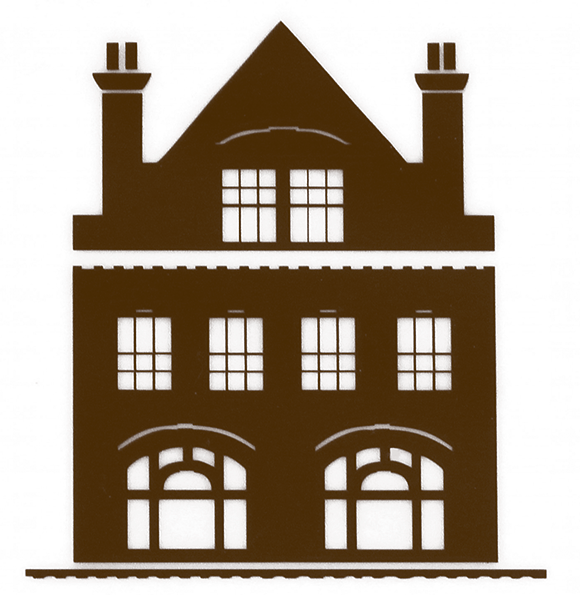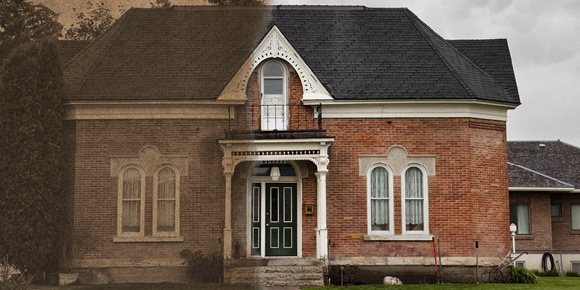Well-developed sales skills and a deep understanding of notable local properties are necessary when dealing with historic real estate.
By Michael Chazin
Historic homes come in every shape and size from the most basic bungalow to the grandest mansion. What they share is a certain historic sensibility based on design, location or owner provenance.
According to the Park Service, U.S. Department of the Interior, a property usually has to be over 50 years old to be considered historic, explains Michelle Drum, CRS, associate broker with Gustave White Sothebys International Realty, Newport, Rhode Island. Drum has a degree in historic preservation from Columbia University and lives in a Nationally Registered 18th century converted schoolhouse. She has specialized in sales of historic homes since 2008. While not every buyer is interested in historic homes, theres no shortage of historic properties in Rhode Island, and her specialization helps set her apart from the competition.
Often, historic homes are located in historic districts or neighborhoods that sometimes garner a historic designation through that association. Gay Rosen, CRS, associate broker with Julia B. Fee Sothebys International Realty, Larchmont, New York, has been selling historic homes in New Rochelle for the past decade.
Homes there were built at the turn of the 20th century and tended to be majestic residences of 4,000 to 5,000 square feet. The area was designated historic in the 1980s, and homeowners there filled out and filed reams of paperwork to obtain the designation for their structures. Now, like other historic areas, New Rochelle homeowners of historic properties must seek permission to make exterior changes that might alter the look of their home.
Getting Comps
Pricing historic homes, as with almost any residential real estate, frequently relies on recent comparables. But that only goes so far since every historic home has its own unique characteristics that may influence price.
Wanda Fears, CRS, Best RVA Realtors, Richmond, Virginia, frequently sells properties in Richmonds historic Fan District. She says that you often have to look at what sold on that same block or an adjoining block to set a price. If the whole block has been redone and every house has curb appeal, that alone adds value, she says.
Historic homes in Palm Springs, California, can carry more than one designation, explains Carol Berger, CRS, with Leaskou Partners. There are the architecturally significant homes from the 1950s that feature mid-century modern architecture, she says. The Preservation Foundation here designates historical class-one architecture that cant be changed. Then there are the movie-star homes. Elvis Presley only owned two homes when he died, she explains. One was Graceland; the other was on Chino Canyon in Palm Springs.
When it comes to pricing there, comparables are key, especially if the home was designed by the same architect in the Palm Springs area. Then you determine if it has been updated or if it is original, says Berger.
Selling the 17,964-square-foot Nixon Mansion in Lake Tahoe, Nevada, presented challenges. There were no comparables, says Sandi Solomonson, CRS, broker/salesperson at Chase International, Incline Village/Reno, Nevada. The sellers invested 10 years on renovations and created an estate that showcases its historic character, yet provides cutting-edge, 21st-century amenities.
Historic homes are obviously older and are found in a range of conditions. If you price historic homes too high, buyers wont come to look because they may see lower-priced homes that already sold in the area, says Rosen. You have to price them competitively against homes that are selling for more in areas where home conditions are more uniform. When prospects enter a historic home that has been restored or well maintained, they can be enticed to offer more. To help that process along, Rosen provides a list of appropriate comparables For the Discerning Buyer which she has available for interested prospects.
Avoiding Surprises
The most important part of marketing a historic home, unless the property has been completely updated, is to have a pre-inspection, says Drum. Most historic homes exhibit some evidence of age, so if there are issues up front, the listing agent can bring in a contractor to correct them. Quantifying issues up front accelerates the chances of getting a strong offer and helps keep the deal together.
Staging historic properties is always critical, agents say. Even though people think their homes are beautiful, everyone has too much stuff, says Fears. You need to clear out most of the personal items so visitors can appreciate the house. Everyone in the market watches HGTV and they have expectations of how a property should look, adds Drum.
Quality photography is a must to generate quick sales of historic homes. Professional shots will make certain the photos stand out both in printed listings and online. Fears points to the growing influence of online venues such as Zillow and Trulia (now under the same corporate umbrella) where quality photography makes historic listings more attractive. Ive also used historicproperties.com, which is a website that gets a lot of traffic, she says.
AWE-INSPIRING APPRAISALS
Getting an appraisal from a local appraiser who is familiar with the area and its historical significance is always preferable. Buyers will get an appraisal through their bank, but you have no control over who that appraiser will be, says Gay Rosen, CRS, associate broker with Julia B. Fee Sotheby’s International Realty, Larchmont, New York.
The appraiser that the bank sends out may not know the area. I dont want to leave anything to chance, says Rosen.
Often, I tell sellers to get their own appraisal, says Wanda Fears, CRS, with Best RVA Realtors, Richmond, Virginia. If they get an appraiser familiar with historic properties, they can just hand that appraisal to whomever the bank sends out.
No matter which online media you choose, its a good idea to include buzzwords that buyers of historic properties might use, Fears suggests. Words and phrases such as historic, restoration, original glass and original woodwork are just a few of the references buyers search for.
When she came up against a seller who didnt want a sign in her yard or to host open houses, Rosen became more creative to attract buyers. At a brokers open house, she served finger sandwiches with fruit and Perrier. I was just trying to keep the excitement going, she says.
To maintain a heightened sense of enthusiasm, Rosen always makes certain to accompany buyers agents when any tours are scheduled. That way she can be sure to point out historic elements of the property and the area. When possible, she also tries to schedule multiple buyers for appointments. That can generate some excitement as well, she says.
Share the Back Story
Knowing the history of the property and taking time to research it adds to its salability. We have a vibrant historical society in Reno, and looking through old documents enabled us to present the story of the Nixon estate with photos, notable past owners (the original owner, George S. Nixon, was a Nevada Senator in the early 20th century) as well as a scandal or two, says Solomonson.
The more you know about the history of the property helps to make it more saleable, echoes Drum. Buyers of historic homes tend to be a specific breed, she adds, and the history of the property can be important to them. Pay to have a history detailed if youre not able to do so yourself. This history can include the landscaping, which can be of equal or higher value than the home itself, Drum adds.
This Old House Went to Market
 Michelle Drum, CRS, associate broker with Gustave White Sothebys International Realty, Newport, Rhode Island, suggests four steps to get a historic home ready to market.
Michelle Drum, CRS, associate broker with Gustave White Sothebys International Realty, Newport, Rhode Island, suggests four steps to get a historic home ready to market.
- Have the seller pay for a pre-inspection, and then hire a contractor to take care of any issues that are uncovered.
- Include floor plans in the package; prospective buyers can take them home to determine how their possessions will fit.
- De-clutter and stage the property. If painting is needed, this is the time to get it done.
- Hire a professional photographer who knows how to photograph historic properties that may feature small rooms. Use this quality photography with the listing and online.
Only when the above-mentioned steps are completed is the property ready to be placed on the market, suggests Drum.
In addition to listing a historic property online, knowledgeable agents create unique websites to showcase the properties. I buy the domain name and create the website with blogs about the area, floor plans and information about the historic district, says Rosen. When prospects show an interest in the property, she forwards them the link so they can learn more.
A robust online presence is critical, says Solomonson. The website for the Nixon Mansion (www.nixonmansion.com) has floor plans, numerous photos and an interactive video that showcases high points of the property. For the larger spaces the formal dining room seats 80 virtual staging was employed to give a more intimate feel.
It is an honor to sell historical estates with buyers who see value in continuing the history of these unique homes, says Solomonson.
The Nixon Mansion is a prime example of the marriage of old-world craftsmanship with todays lifestyle.
Find more information about the National Park Services National Register of Historic Places.








